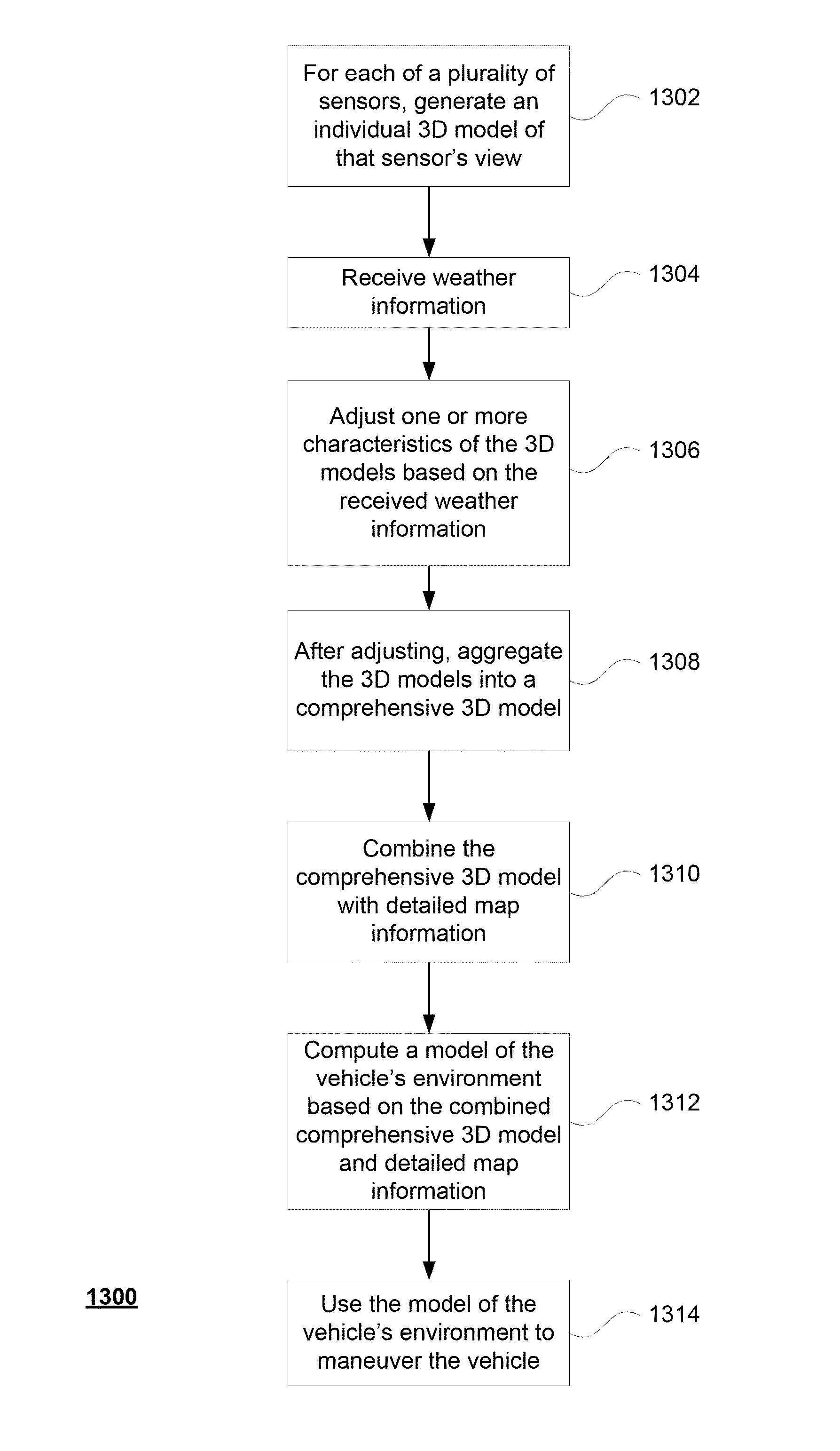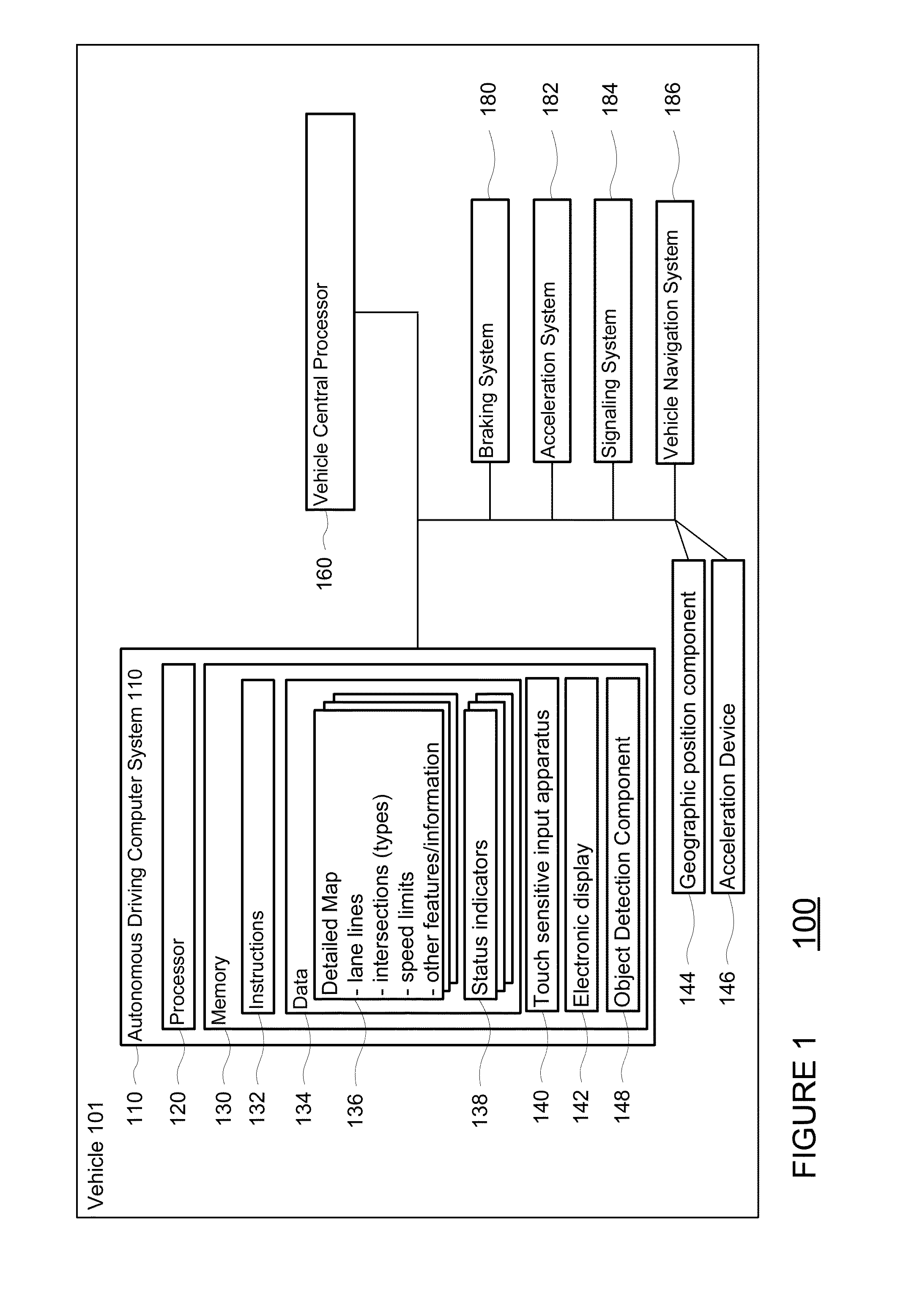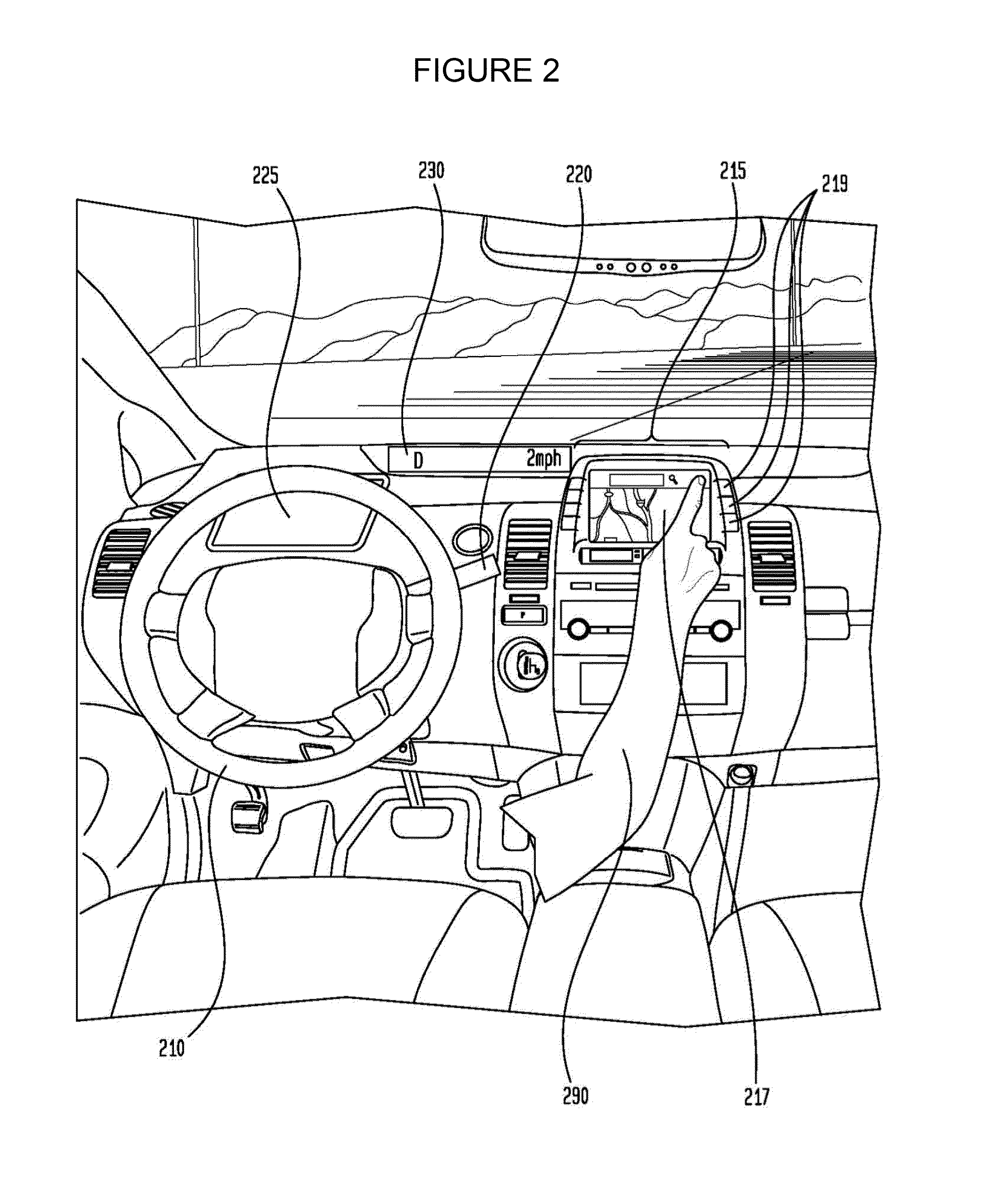Modifying behavior of autonomous vehicles based on sensor blind spots and limitations
a technology of autonomous vehicles and blind spots, applied in the direction of vehicle position/course/altitude control, process and machine control, instruments, etc., can solve problems such as dangerous maneuvers
- Summary
- Abstract
- Description
- Claims
- Application Information
AI Technical Summary
Problems solved by technology
Method used
Image
Examples
Embodiment Construction
[0024]Aspects of the present disclosure relate generally to modeling a vehicle's current view of its environment. This view need not include what objects or features the vehicle is actually seeing, but rather those areas that the vehicle is able to observe using its sensors if the sensors were completely un-occluded. For example, for each of a plurality of sensors of the object detection component, a computer may generate an individual 3D model of that sensor's field of view. Weather information is received and used to adjust one or more of the models. After this adjusting, the models may be aggregated into a comprehensive 3D model. The comprehensive model may be combined with detailed map information indicating the probability of detecting objects at different locations. A model of the vehicle's environment may be computed based on the combined comprehensive 3D model and detailed map information and may be used to maneuver the vehicle.
[0025]As shown in FIG. 1, an autonomous driving...
PUM
 Login to View More
Login to View More Abstract
Description
Claims
Application Information
 Login to View More
Login to View More - R&D
- Intellectual Property
- Life Sciences
- Materials
- Tech Scout
- Unparalleled Data Quality
- Higher Quality Content
- 60% Fewer Hallucinations
Browse by: Latest US Patents, China's latest patents, Technical Efficacy Thesaurus, Application Domain, Technology Topic, Popular Technical Reports.
© 2025 PatSnap. All rights reserved.Legal|Privacy policy|Modern Slavery Act Transparency Statement|Sitemap|About US| Contact US: help@patsnap.com



